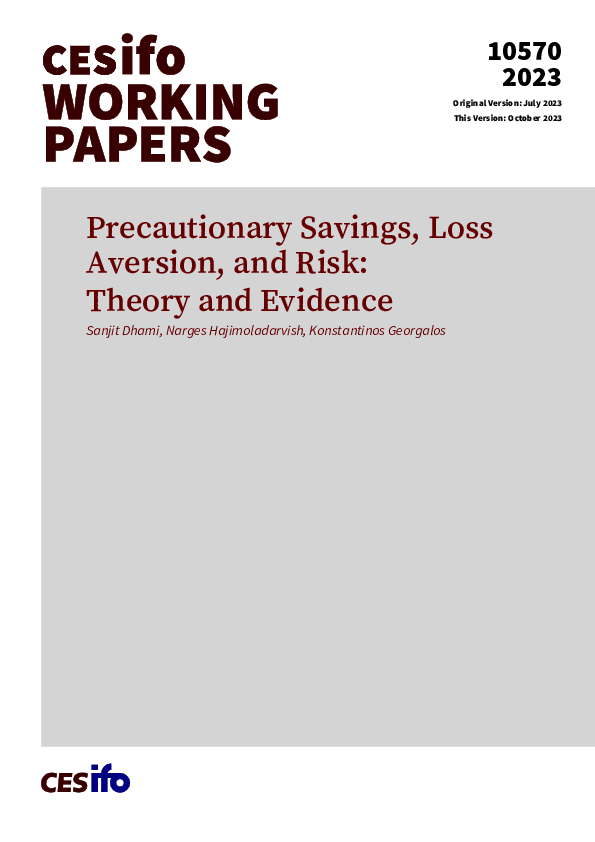Precautionary Savings, Loss Aversion, and Risk: Theory and Evidence
CESifo, Munich, 2023
CESifo Working Paper No. 10570

We consider a simple, two period, consumption-savings model with future income uncertainty. We are interested in the relation between the micro and macro motives for dealing with uncertainty. These include risk aversion, loss aversion, and precautionary savings. We provide the relevant theory, followed by empirical tests based on subject-specific savings choices, and the measurement of subject-specific behavioral parameters such as loss aversion and present bias. We predict, and show empirically, that loss aversion reduces savings, and that those who are more loss averse are less likely to engage in precautionary savings. Present-bias reduces savings. We also show that decision makers save more in response to a mean preserving spread of future random incomes, and this response is strengthened by loss aversion. We term this as the loss aversion-hedging motive.
Fiscal Policy, Macroeconomics and Growth
Behavioural Economics